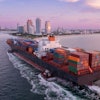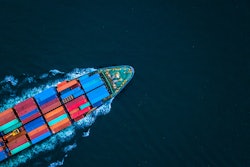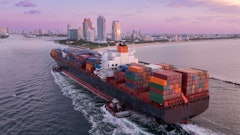
As the old adage goes, ‘you can't see the forest for the trees,’ and that same concept can be applied today to some of the biggest fashion brands and the effect unknown gaps of vetting can have on their ability to weed out forced labor from their textile supply chains.
Addressing forced and child labor has certainly never been a simple mission, but it is one which is now intensifying, particularly in the apparel industry where over 15% of clothing items sold in the U.S. are affected. The U.S.’ Uyghur Forced Labor Protection Act (UFLPA) and Canada’s Modern Slavery Act are designed to address the exploitation of China’s minority Uyghur population by prohibiting any goods produced in Xinjiang’s Autonomous Region. These acts compel companies and brands, many of which rely on China’s vast cotton supplies for manufacturing, to provide clear evidence that no forced labor was utilized in production.
Yet in 2023, a 49% rise in labor-intensive products exported from Xinjiang suggests something is seriously lacking. The ecommerce and fast fashion revolution has provided new windows to sidestep UFLPA legislation, particularly in the wake of the U.S.’ de minimis loophole. This has been aggressively used by Chinese companies and online marketplaces to ship millions of low-value packages without being subject to tariffs, penalties, taxes and customs inspections, making the forced labor equation even more difficult.
The global textile supply chain presents major obstacles to leading brands due to its interconnected and disparate nature, enabling origin fraud tactics known as ‘cotton washing.' Around 85% of China’s cotton comes from Xinjiang, and the industry is plagued by varying measures designed to hide production sources. 'Cotton washing' is a widespread pattern, where cotton from Xinjiang is reprocessed by companies in other regions of mainland China, then shipped to foreign manufacturing plants in India, Sri Lanka and Bangladesh, mixed with other sources, finally to be delivered as a finished product to western brands, obscuring its true origin.
The issue has now caught some of the world’s biggest brands in its crosshairs. In Canada, the Ombudsperson for Responsible Enterprise (CORE) recently began investigating Levi Strauss Canada (amongst others) following complaints over its alleged supply chain relationships with Chinese companies connected to Uyghur forced labor. Levi’s dismissed the allegations and claimed no commercial relationships existed with the suppliers mentioned; Jiangsu Guotai Guosheng Co., Jiangsu Lianfa Textile Co., Huafu Fashion Co., Luthai Textile Co., and Xinjiang Zhongtai, citing that the evidence was based on outdated inaccurate data from 2017-2019.
That might well be Levi’s honest position, but how much do brands like this really know about their own suppliers? When Publican conducted an in-depth investigation into Levi’s operations, it used digital vetting technology, harnessing a wealth of unique real-time sources to analyze transactions between the denim brand’s various suppliers. It found that Chinese company Jiangsu Lianfa Textile Co, listed on the UFLPA sanctions list, had been shipping cotton to Aquarelle, an Indian clothing manufacturer. What makes this significant is that Aquarelle was discovered shipping to Levi’s as late as 2022, refuting the explanations given by the company surrounding inaccurate data. This does not necessarily indicate a smoking gun, but the truth is that even the biggest and most responsible brands today find it impossible to properly vet their products given the circumstances.
In reality, brands have information into every tier of their own supply chain, which is concretely evidence-based in the case of direct tier one suppliers. Yet the information from tier two and tier three suppliers is based on peripheral connections that borders on conjecture. This creates an illusion of false confidence and makes it harder for companies like Levi’s to align with compliance standards.
Instead of relying on the good graces of supplier information, digital vetting technology scans the entire global data ecosystem to gain unprecedented visibility into those difficult supply chains and address those black holes of information that render supply chains incomplete. From trade routes and history to legal filings and relationships, it verifies the information supplied on every supplier with smart new tools and mechanisms to detect the slightest hints of forced labor.
For companies to become more responsible in their supply chain, they need to harness this AI technology to allow visibility that was impossible before. When you automate supplier vetting, you allow greater efficiency making it easier for companies to avoid being connected to forced labor.
Technology like digital vetting can completely transform how true compliance can be achieved today and how forced labor can be rooted out of global trade once-and-for-all. It not only provides iconic brands like Levi’s the ability to gain full visibility into their supply chain, but it also gives them the clarity to recognize what exactly is needed to be compliant.

















![Pros To Know 2026 [color]](https://img.sdcexec.com/mindful/acbm/workspaces/default/uploads/2025/08/prostoknow-2026-color.mduFvhpgMk.png?ar=16%3A9&auto=format%2Ccompress&bg=fff&fill-color=fff&fit=fill&h=135&q=70&w=240)
